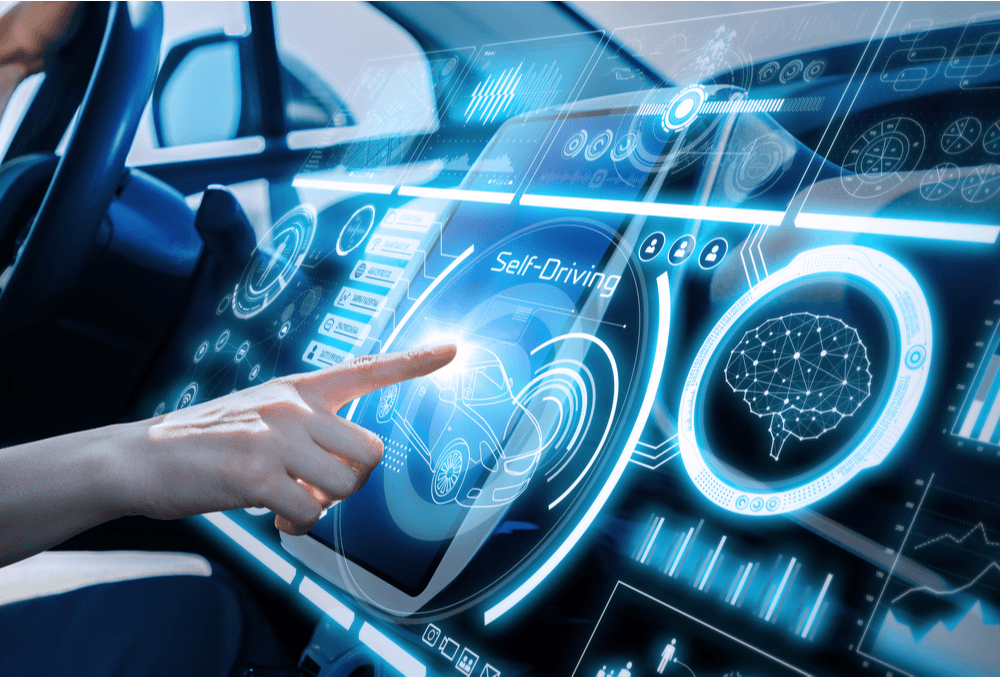Humankind has reached the times where 2.5 quintillion (that’s 2.5 followed by 18 zeros) bytes of data are created daily. With around a million Facebook logins and 511 200 tweets per every minute (sic!), technology has entered a whole new level of advancement and it’s only moving forward at a skyrocket pace. Since those innovative ways of living are calling for ingenious, groundbreaking measures, more and more technologically advanced arrangements are being introduced during this peculiar race of tech-revolutions.
We get to witness an era so data-obsessed that amongst ten of the wealthiest companies, seven have already made billions of dollars on data-based services. Another proof backing up its importance is the ever-growing extent to which SaaS platforms are used. According to some forecast stats:
- by the end of 2021, 73% organizations will run their apps on SaaS structures
- up to 85% small businesses will heavily invest in SaaS abundant solutions
- the total size of the public SaaS market is projected to reach $157 billion
The impressive list may go on but with technology endlessly buzzing over SaaS, it appears quite obvious how significant the use of SaaS becomes. And how that’s unlikely to end. Being highly customizable, cost-effective and widely available, SaaS poses unconstrained possibilities for its users.
With the enlarged demand for SaaS solutions, the increase in data-based collecting services can be noticed with a naked eye. With the tendency of pushing the products and services to an online environment, such as cloud storages, we are bound to collect more and more data on, soon, nearly every aspect of our lives.
But first, so as not to get lost in the translation, let’s briefly elaborate on what the buzz is about.
What is big data?
Put simply, big data is an extensive collection of data, so inordinate that it cannot be handled via what might be deemed as standard software. It’s often times described with the rule of 3Vs:
- velocity - the speed with which data is collected and transmitted, it also refers to the reaction time of analyzing and processing gathered information
- volume - the absolutely gigantic amount of collected data
- variety - the huge variety of types of stockpiled information that may come in the forms of texts, numbers, images or videos
The massive success of collecting data has its roots in two primary sources. First one is the aforementioned switch to an online environment, the second is the lesser cost of storage amenities, which allows for better management and analysis of ever-growing amounts of data. Over the last years, collective material started playing a valid role in businesses’ development, impacting the buildout of aspects as crucial as product development, customer journey, machine learning or compliance checkups.
Now, the initial 3Vs have been extended with two more. Veracity and value, first referring to the accuracy, the latter to worth, precisely to what companies can do with the accumulated information and whether it is fit to make a profit. It turns out that vast quantities of data can in fact be turned into a capital.
Data monetization
It should be to no surprise that people figured out a way to start making profit off the collection of data. Quite a substantial one too. Data monetization is basically the process of turning data-based products, marketing figures or even just the completed raw data sets into a monetary value. An example of such a raw set would be extensive contact lists or figures showing specific trends that could potentially lead a business into a specific direction.
In addition to simply selling the data, it can also bring profits by expanding the functionalities of existing products. This can happen via adding i.e. analytics that can improve customer experience.
Connected car data - what is it?
Connected cars are capable of gathering all sorts of information. From principle information, such as the speed or location, through engine status and malfunctions all the way to details such as whether the door was locked. For the collection of data, the responsibility holds the vehicle’s electronic control module (ECM). ECM is an embedded system in automotive electronics that controls one or more of the electrical systems or subsystems in a vehicle. It runs via multiple sensors and camera modules and consists of many subsystems which combined together make up what we know as a car's computer. Amongst the subsystems a few main ones can be differentiated:
- Engine control module
- Powertrain control module
- Human-machine interface
- Door control unit
- Battery management system
- Speed/brake control module
There are also more components responsible for the data collection, that being i.e. Controller Access Networks (CANs).
It is expected that connected car data will enable autonomous driving systems to expand their capabilities, leading us into the next age of transport. Connected car data should be one part of a bigger picture when it comes to fleet management and smart mobility services.
What are the benefits of connected car data and how can it bring profit? Real-life examples
The first step towards building an understanding of what connected car data and data monetization combined means for us consumers, is to look at how some companies have already made use of it.
Shared mobility / taxi services
Uber, Lyft or Zipcar are the shining examples. It's no secret that the taxi industry is going through a major transformation right now - and it all comes down to data. The traditional model of taxis was based on an old-fashioned dispatcher system in which passengers would call for a car at their location and then wait until their ride arrived. It was far from perfect, as it didn't take into account the possibility of traffic jams or bad weather. The result is that taxis were often late and frustrated drivers would sometimes drive slowly to avoid losing their jobs for not picking up enough customers.
Uber, Lyft and Zipcar - companies whose core idea revolved around real-time tracking systems. Their apps allowed users to see where the nearest car was and request a ride. Drivers were also able to track their progress on an interactive map, which meant that they knew exactly when and where someone needed them. This simple idea changed everything - not only did it make for more reliable service (no waiting around), but it ultimately helped drivers boost their earnings by getting more customers in less time.
The next step for Uber, Lyft and Zipcar was to find out how they could increase their revenues even further - which is where the connected car data comes into play. By utilizing real-time tracking systems (which can be achieved through GPS and wireless communication), they hope to adjust prices based on demand. If it's raining, then the price during that time will be higher - this is because customers are more likely to seek shelter and pay extra for a service. Alternatively, if there's an accident on the road and traffic suddenly comes to a standstill, prices could drop as drivers become idle and go elsewhere.
The idea behind this new pricing system is that it will benefit both companies and customers. Customers, because they won't need to pay as much if demand is low - while still ensuring that drivers get paid the same amount even when there's no traffic jam. Companies, on the other hand, can put up promotional prices during rush hour or other busy periods in order to attract more customers and increase revenues.
Insurance/marketing companies
There are instances where insurers are using the data to adjust the policy and insurance rates based on the data collected from a vehicle. It can be used for a variety of reasons. For example: usage-based insurance, incident reporting, accident reconstruction or driver behaviour monitoring. Such facilitations allow for a quicker recovery from a stolen vehicle (and massively help in its locating) as well as pose an effective means of determining the cause of an accident.
In terms of marketing firms, some agencies have even found creative ways of advertising their services through new touch points inside vehicles or outside while drivers drive by - all thanks to insights from IoT sensors about how people feel when passing by an advertisement.
Connected car data vs e-mobility
Being one of the most technologically advanced branches of mobility, electro-mobility certainly has a lot to say in terms of the usage of connected car data. Surely, Charge Point Operators who happen to manage EV charging stations managing platforms could go on for hours on how much data can be collected and analyzed just by viewing the charging tendencies.
This can be used for a plethora of reasons, such as the grid overflow. As much as, for now, the mass EV adoption is not yet so advanced as to generate possible grid blowout, with the increasing number of charging stations it is already crucial to test the limitations of the energy suppliers. Namely, through the connected car data, it is possible not only to monitor how many cars are being charged at once but also analyze the tendencies, measure the peak times or determine the overused spots. This allows for a proper action undertaken in real-time as the flow of EV charging evolves.
Same goes with the EV driver journey. Through data updated in real time on EMSP apps, electric vehicle users can not only find a charging station but also check it upfront in terms of the capacity or even whether it’s currently taken by another person. Some even allow for its reservation.
You can learn more about the smart mobility and emerging trends from our ebook The Growing Concept of E-Mobility. It can be downloaded freely for everyone.

